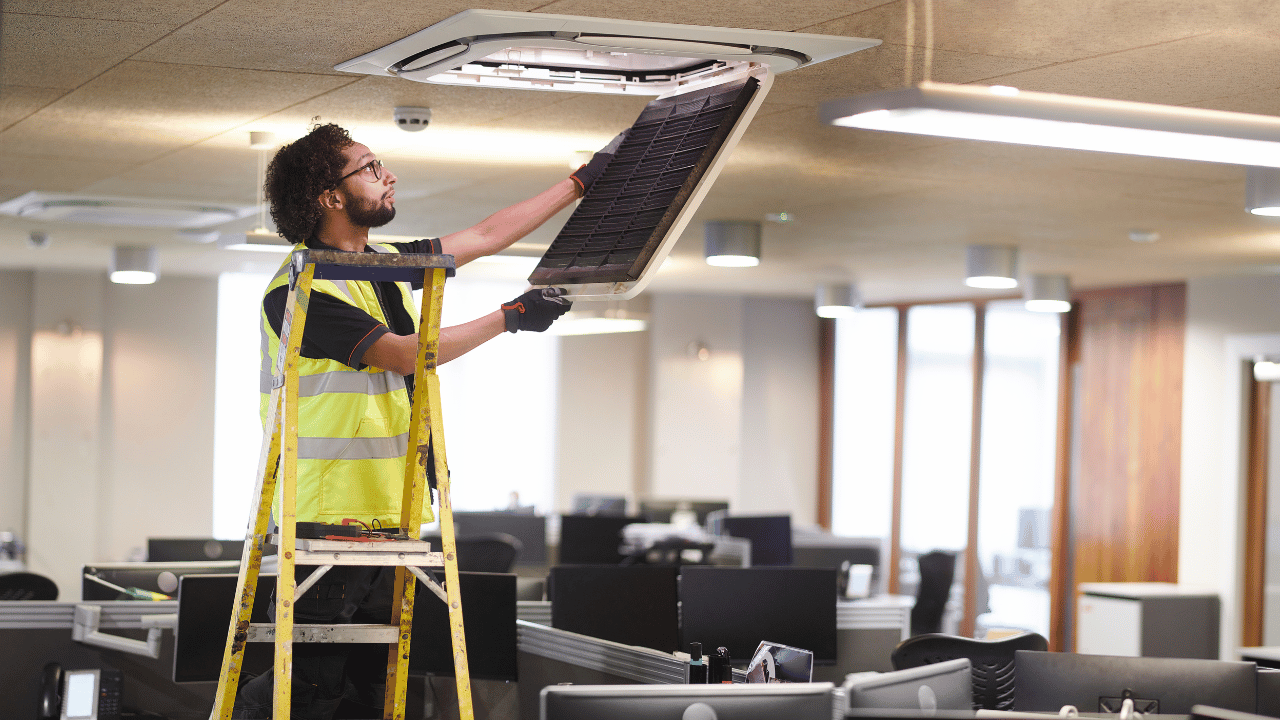Last Updated on September 24, 2023 by Pro Handyman Australia – Editorial Team
As the scorching summer heat sets in, your air conditioner becomes your best ally in staying comfortable indoors. However, like any complex appliance, air conditioners can encounter issues over time. It’s not uncommon to experience problems that hinder your cooling system’s performance. The good news is that many of these issues can be resolved with some simple do-it-yourself fixes. In this guide, we’ll explore the most common air conditioner problems you might encounter and provide practical solutions that you can implement on your own. By understanding these problems and their DIY fixes, you’ll be better equipped to ensure that your AC remains efficient, reliable, and capable of providing the refreshing cool air you crave during the hottest months.
Addressing Central AC Issues: A Comprehensive Guide
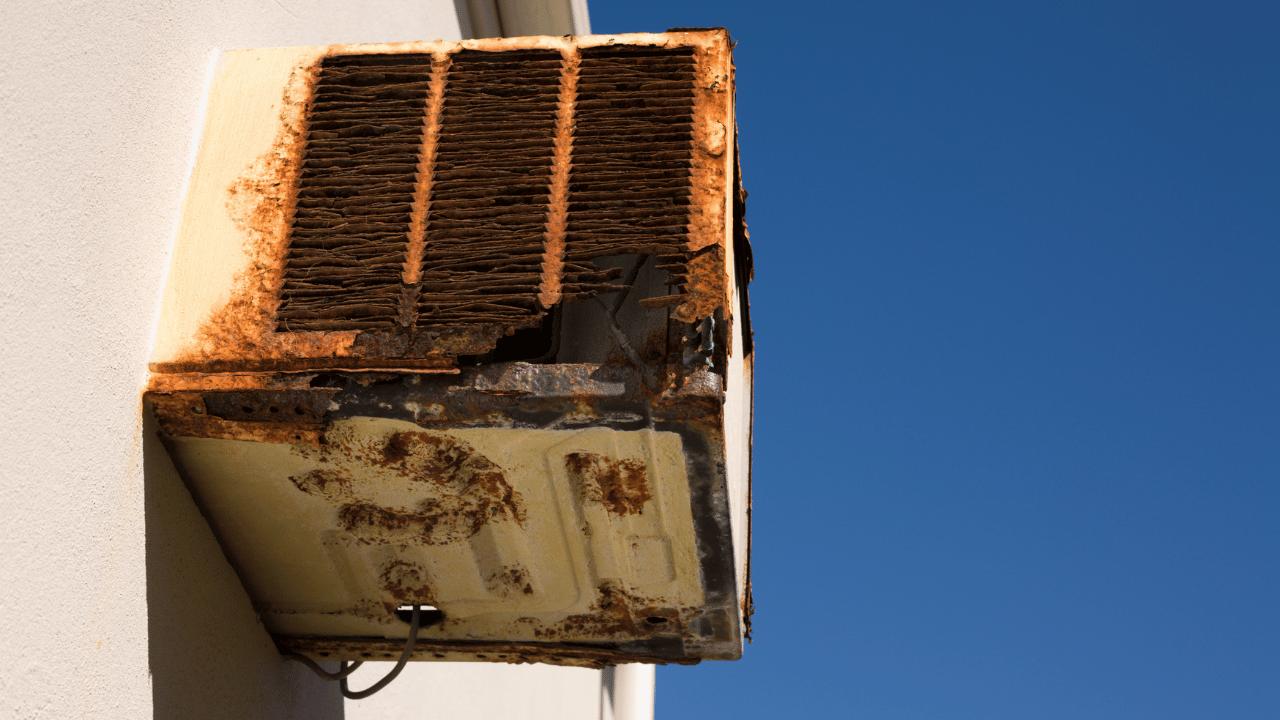
Ensure Correct Thermostat Settings
Begin your troubleshooting journey by confirming that your thermostat is set to ‘cool’. After winter, it’s surprisingly common for homeowners to overlook switching the thermostat setting from ‘heat’. Before delving deeper into other issues or seeking expert help, this should be your starting point.
Seal Your Home from External Elements
Although it might seem intuitive, many forget the importance of keeping windows and external doors shut when the air conditioning is on. Inviting warm external air indoors forces your AC unit to exert more, decreasing its efficiency and increasing your utility bills. Always ensure your home’s openings are secured to optimize the performance of your AC.
Examine Circuit Breakers
An air conditioner that refuses to power up could be the result of tripped circuit breakers due to electrical overloading. To address this:
- Locate the AC breakers in your electrical panel.
- Switch them off and then on.
- Restart your AC after a few minutes. If this fails, consider replacing the fuse. However, if the issues persist, it’s advised to consult a certified electrician.
Prioritize Clean Air Filters
The accumulation of dirt, dust, and pet hair can make air filters the prime suspects in many AC malfunctions. Typically found in your furnace, these filters require replacements every three months, especially if you have pets or use your AC regularly. Neglecting them can culminate in increased energy consumption and potential equipment failure.
Monitor Refrigerant Levels
Inadequate refrigerant levels might be the reason your AC isn’t cooling your space effectively. This substance is essential in extracting heat and humidity from the air. A low level might indicate a leak, which in severe cases might necessitate a unit replacement. It’s crucial to enlist a technician with the right tools to assess and address this issue.
Avoid Closing Air Vents
It’s a common misconception that shutting vents in infrequently used rooms can conserve energy. Contrarily, this practice can jeopardize your AC system. Home air ducts invariably have minor leaks, and closing vents amplifies the pressure in these ducts, exacerbating the leakage. Consequently, this can inflate your energy bills rather than reduce them.
Maintain Clean Air Ducts
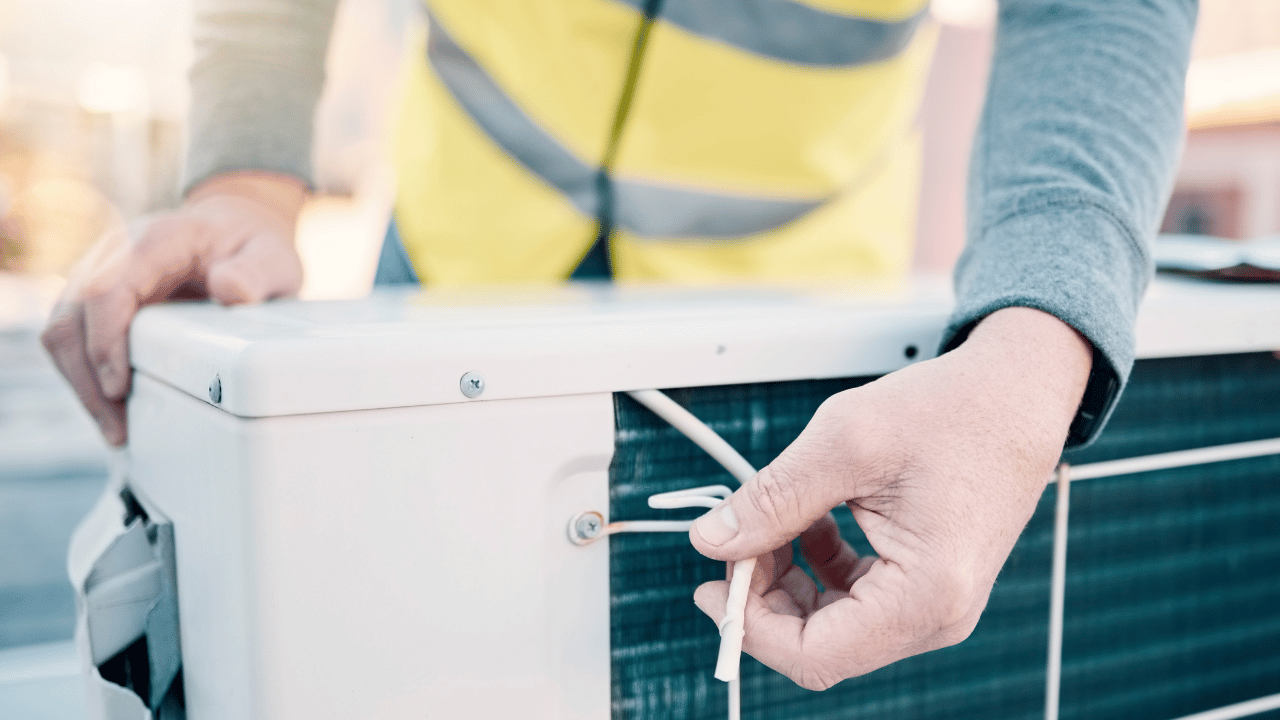
Your AC’s efficiency can be compromised by dirty or mold-infested air ducts. Warning signs include uneven cooling, visible dust emissions from vents, or a musty odor when the AC is running. If such symptoms are observed, it’s prudent to have your air ducts inspected and cleaned by professionals.
Be Vigilant About Water Leaks
Should you notice water leaking from your AC into your home, promptly turn off the unit to avert potential water damage. Often, these leaks stem from blocked drain lines. While using a wet/dry vacuum might rectify the issue, persistent leaks might necessitate professional intervention.
Inspect the External AC Unit
While indoor components like vents and ducts are pivotal, don’t neglect the outdoor counterpart—the condenser. Over time, it can amass debris, including dirt, leaves, and weeds. This accumulation hampers its efficiency, leading to escalated energy costs. Maintain it by:
- Rinsing with a hose.
- Trimming surrounding vegetation.
- Ensuring a two-foot clearance from large objects.
Recognize When to Seek Expertise
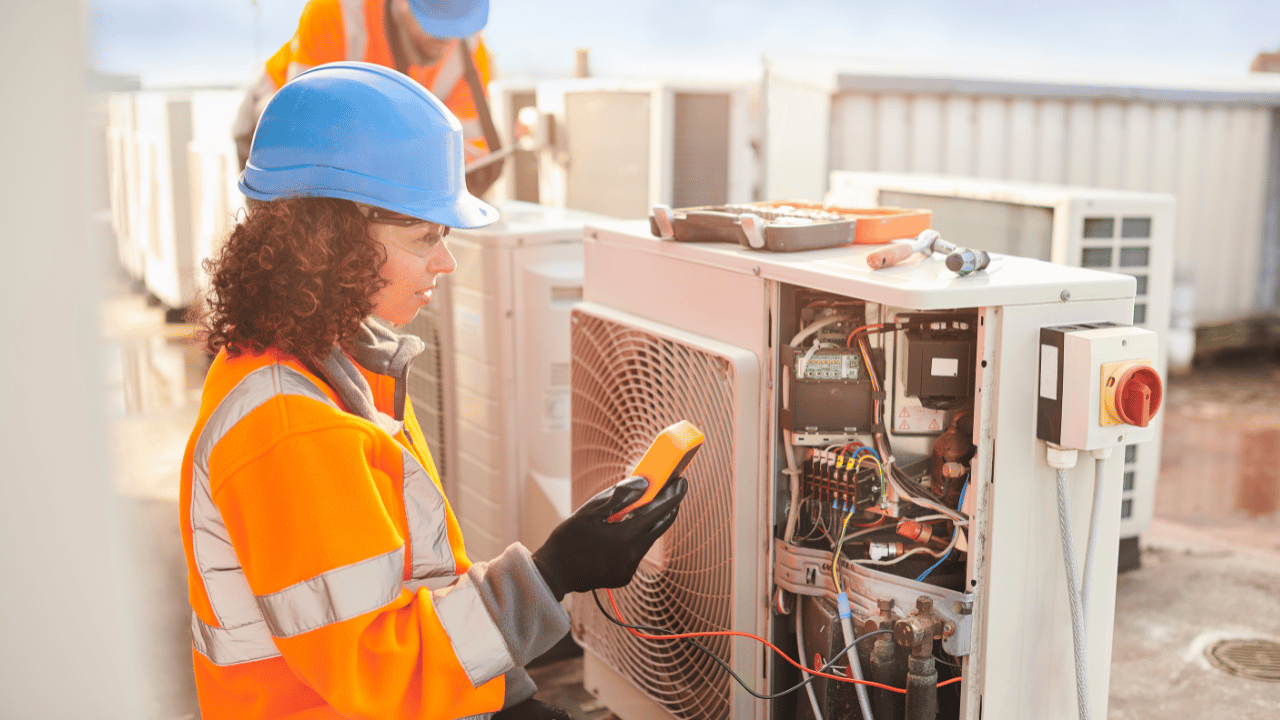
While self-troubleshooting can rectify some issues, discerning when to seek professional intervention is crucial. A well-maintained unit is less prone to major malfunctions, saving you from expensive repairs or replacements. For optimal performance and peace of mind, consider scheduling a professional inspection of your air conditioner towards the end of spring.
Understanding and DIY Solutions for Common Air Conditioner Problems
Air conditioners, whether central systems or window units, are vital for maintaining comfort in our homes, especially during those sweltering summer months. But like all machines, they’re prone to hiccups and breakdowns. Instead of panicking and dialing your technician every time your AC acts up, it’s beneficial to have a basic understanding of common air conditioner problems and know how to address them yourself. Here’s why you should be equipped with this knowledge and some DIY solutions.
Why Understand Common Air Conditioner Problems?
- Savings: Professional repair services can be costly. Knowing how to identify and fix minor issues can save you a significant sum in the long run.
- Quick Fixes: With the knowledge of common problems, you can quickly address and solve issues without waiting for professional help.
- Maintenance: Regular maintenance can prevent many common problems. If you’re aware of these issues, you’re more likely to keep your unit in top shape, leading to its longer lifespan.
- Safety: Understanding the potential issues with your AC can also help you identify when there’s a serious problem that could pose a safety threat.
- Informed Decisions: If you’re aware of common issues and their fixes, you can make an informed decision about whether it’s time to repair or replace your unit.

DIY Fixes for Common Air Conditioner Problems
- Thermostat Settings: Before jumping to conclusions, ensure your thermostat is set to ‘cool’ and at the desired temperature. It’s a simple oversight but one that happens more often than you’d think.
- Circuit Breakers: If the unit isn’t turning on, check the circuit breakers. If tripped, reset them. If they trip again soon after, it’s time to call in a professional, as there might be a more significant electrical issue.
- Clean the Filters: One of the most common reasons for reduced efficiency and cooling is a clogged air filter. Clean or replace your filters every 1-3 months, depending on use and the environment.
- Inspect the External Unit: Over time, the outdoor condenser unit can get clogged with leaves, dirt, and debris. Ensure it’s clean and has adequate airflow. Trim any shrubs or plants around it and gently hose it down to clean off accumulated dirt.
- Check for Ice: Sometimes, the coils of the AC can freeze. If you see ice, turn off the unit and let it thaw. Clean any dust or debris from the filters and the evaporator coil. If the problem persists, it might be due to low refrigerant levels, requiring professional service.
- Drain Line Cleaning: The drain line can become clogged with dirt, lint, and mold. A clogged drain line can cause the unit to leak water. Using a wet/dry vacuum, you can clear out the blockages.
- Listen for Sounds: Squealing, grinding, or grating sounds are indications that something might be wrong inside the unit. While identifying the exact issue might require a professional, being aware of these sounds and turning off the unit can prevent further damage.
Efficient Troubleshooting for Common Central AC Challenges
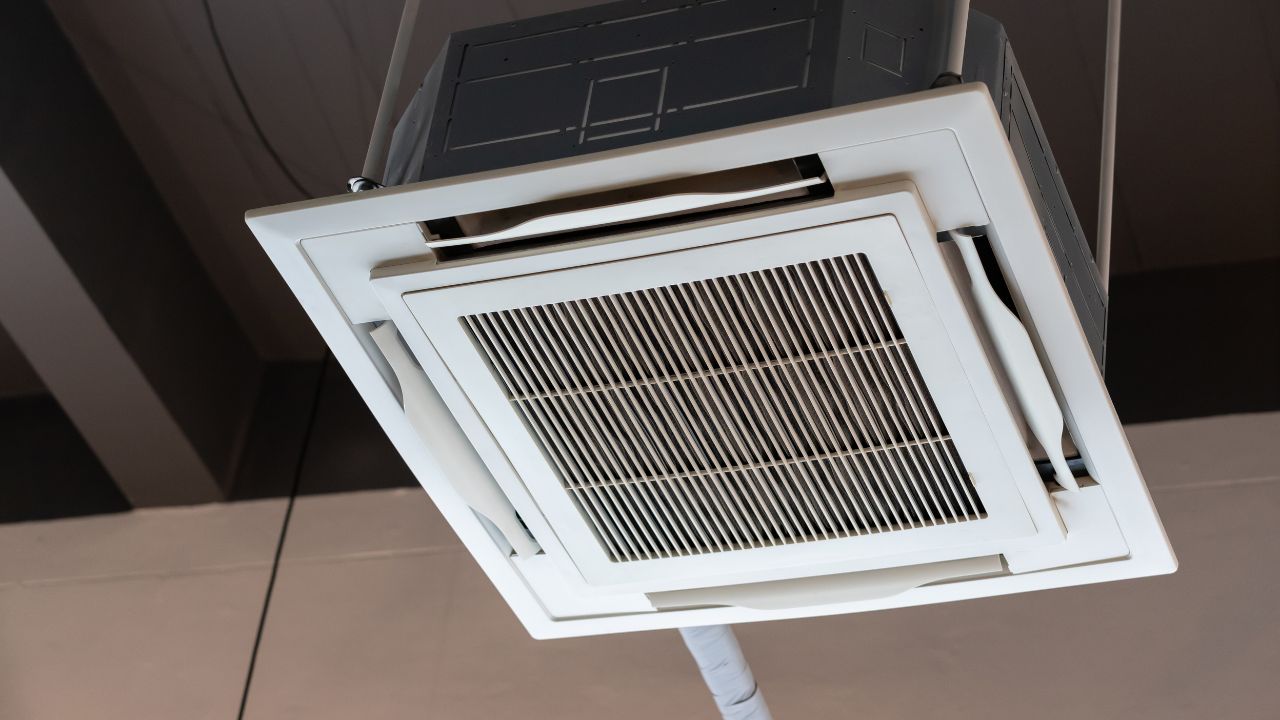
Optimal Thermostat Settings
A fundamental step in troubleshooting is verifying that your thermostat is set to the cooling mode. It might seem elementary, but it’s surprisingly common for individuals to overlook this setting after winter. Ensure the thermostat is correctly set before diving into more complex troubleshooting or reaching out to a technician.
Maintain a Closed Environment
Although it may appear evident, ensuring all windows and external doors are closed is crucial. Allowing warm air to infiltrate your home means your AC unit has to work harder, leading to increased energy bills and reduced efficiency. Remember to keep the environment sealed when the AC is operational.
Electrical Circuitry Check
At times, an overloaded system might trip your AC circuit breakers. Visit your electrical panel, reset the AC breakers, and then test your air conditioner after a few minutes. If this doesn’t resolve the issue, inspect the fuse. If the problem persists, it’s advisable to consult a licensed electrician.
Air Filter Maintenance
The significance of a clean air filter cannot be overstated. Accumulation of dust, pet hair, and dirt can hinder airflow and compromise your AC’s efficiency. Typically located in the furnace, these filters should be swapped out quarterly, especially if the unit is heavily used or there are pets in the house.
Evaluate Refrigerant Levels
Inadequate cooling could be attributed to low refrigerant levels. This substance is responsible for extracting heat and moisture from the atmosphere. A shortage may necessitate a refill, but recurrent deficits could indicate system leaks. In such instances, a technician’s expertise is essential.
Maintain Open Air Vents
While it might seem logical to close vents in seldom-used rooms to conserve energy, this can actually inflict damage on your AC unit. Closing vents can escalate the pressure in ducts and intensify air leakage. Thus, it’s best to keep vents open.
Air Duct Inspection and Cleaning
Blocked or dirty air ducts can obstruct airflow. Signs of obstruction include uneven cooling or visible dust emission from vents. Moreover, a musty aroma when the AC is activated could signal mold presence. If any of these symptoms appear, seek a professional duct inspection.

Monitor for Water Leakage
Immediate action is required if water seeps from your AC unit into your residence. This phenomenon can arise from blockages in the drain line. Using a wet/dry vacuum may alleviate the blockage, but if the problem continues, consult a specialist.
Examine the External AC Unit
Often, AC issues originate from external system components. The outdoor unit, known as the condenser, can collect debris over time. Cleaning it periodically with a hose, ensuring the surrounding area is free from obstructions, and maintaining a two-foot clearance can enhance its efficiency.
Professional Consultation
Although the steps outlined above can help you address many AC complications, there are scenarios where expert intervention becomes imperative. Regular maintenance can preempt many issues, and recognizing when to enlist a technician’s assistance is crucial.
Ensuring Optimal Performance of Your Air Conditioner (Additional Information)
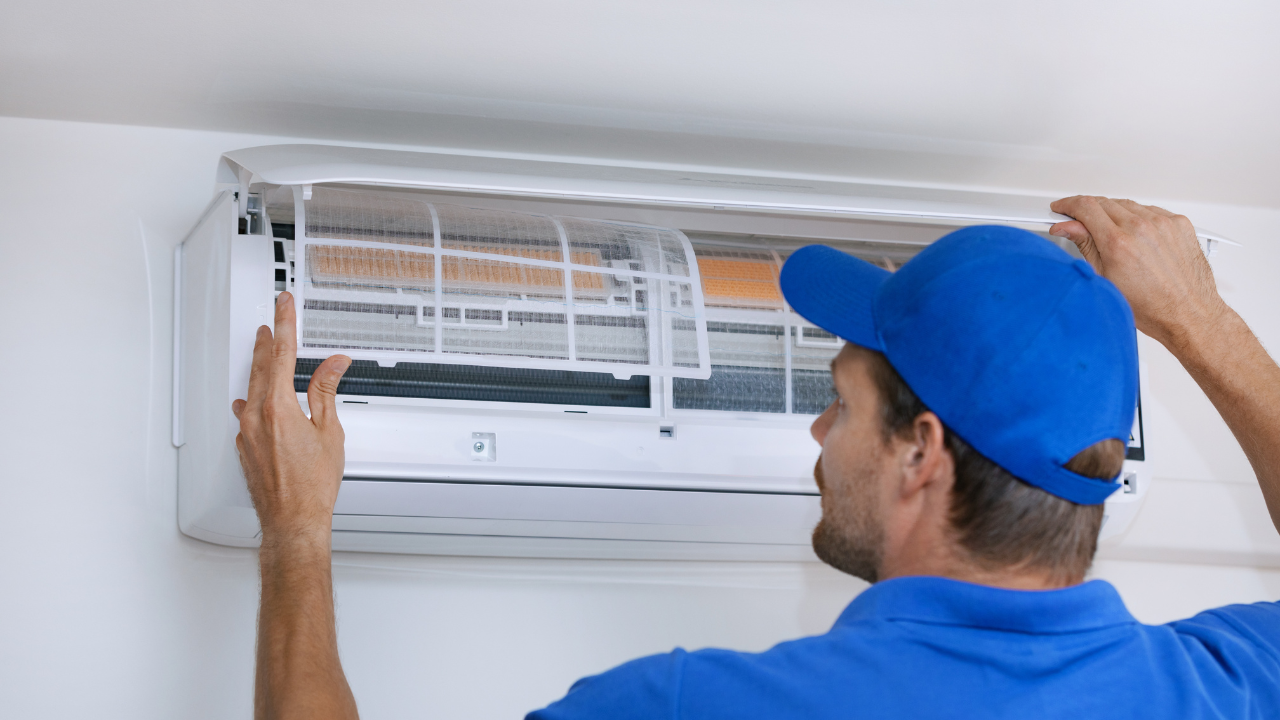
Routine Maintenance and Check-Ups As the balmy days of summer make their return, the once forgotten air conditioners reclaim their prominence in households. With an estimated 90% of American homes equipped with some form of air conditioning, its significance escalates, especially during the scorching heat. However, after months of inactivity, it’s essential to inspect and prepare your air conditioner for optimal performance. Regular tune-ups can help identify potential issues, prevent expensive future repairs, and extend the lifespan of your units.
Indoor Water Leaks: Causes and Solutions Discovering water leaking from your indoor air conditioning unit is a clear sign that maintenance is overdue. One prevalent reason is a clogged condensate drain due to the accumulation of fungi or algae, causing water to reverse its flow back into your home. Moreover, a malfunctioning condensate pump could also be a culprit.
Solution: Addressing indoor water leaks can often be achieved either through DIY methods or with professional assistance. Using a wet or dry vacuum, the condensate pipe can be cleared. For fungal or algae build-ups, pouring 6 ounces of vinegar into the drain line can be effective. Always remember to refer to your unit’s user manual to identify the drain pipe’s precise location.
Outdoor Water Leaks: Identifying and Resolving On particularly warm days, observing a water puddle beneath your air conditioner’s compressor is not uncommon. This issue can arise due to various factors such as a desiccated air filter, damaged condensate pans, or improper installation.
Solution: It’s imperative to switch off your air conditioner and disconnect its power supply upon noticing such an issue. If unresolved, complications might arise, necessitating the expertise of a professional technician.
Refrigerant Leaks: A Potent Issue The refrigerant, often referred to as Freon, is pivotal for the cooling mechanism of your air conditioner. Leaks can drastically affect the system’s efficiency and are also detrimental to both health and the environment. Such leaks might originate from degrading connections, physical unit damages, or vibrations weakening the refrigerant lines.
Solution: For minor leaks, topping up the refrigerant and implementing a minor fix might suffice. However, significant faults might demand the replacement of the entire piping system. Ensure the refrigerant charge aligns with the manufacturer’s specifications. Upon detecting a leak, it’s essential to engage a professional to handle the issue safely and efficiently.
Addressing Dirty AC Filters AC filters are instrumental in ensuring a pollutant-free airflow. Neglecting these filters can lead to clogging by dirt particles, thereby diminishing your system’s efficiency.
Solution: Most AC systems come with easily replaceable filters. If they are reusable, a simple wash and thorough drying will suffice. It’s advised to clean the filters bi-weekly and replace them every two months during the air conditioner’s high-usage periods. For households with pets, special attention is required due to the shedding of fur, but investing in high-quality air filters can mitigate this concern. If persistent clogging occurs, consulting a professional is the best course of action.
The Role of the Compressor and Its Common Problems The compressor is a pivotal component of air conditioners, facilitating the heat exchange process and managing the system’s pressure. Several issues, such as dirty coils, fluctuations in refrigerant levels, or insufficient lubrication, can lead to its malfunction.
Implications: A shortage of refrigerant can cause the compressor to overheat, ceasing its operation. Conversely, an overload of refrigerant can increase the system’s pressure, leading to failure.
Solution: Symptoms of compressor issues include inadequate cooling or weak HVAC airflow. It’s advisable to reach out to an air conditioning expert when facing such issues. In cases of extensive damage, replacing the compressor may be more cost-effective than repairs.
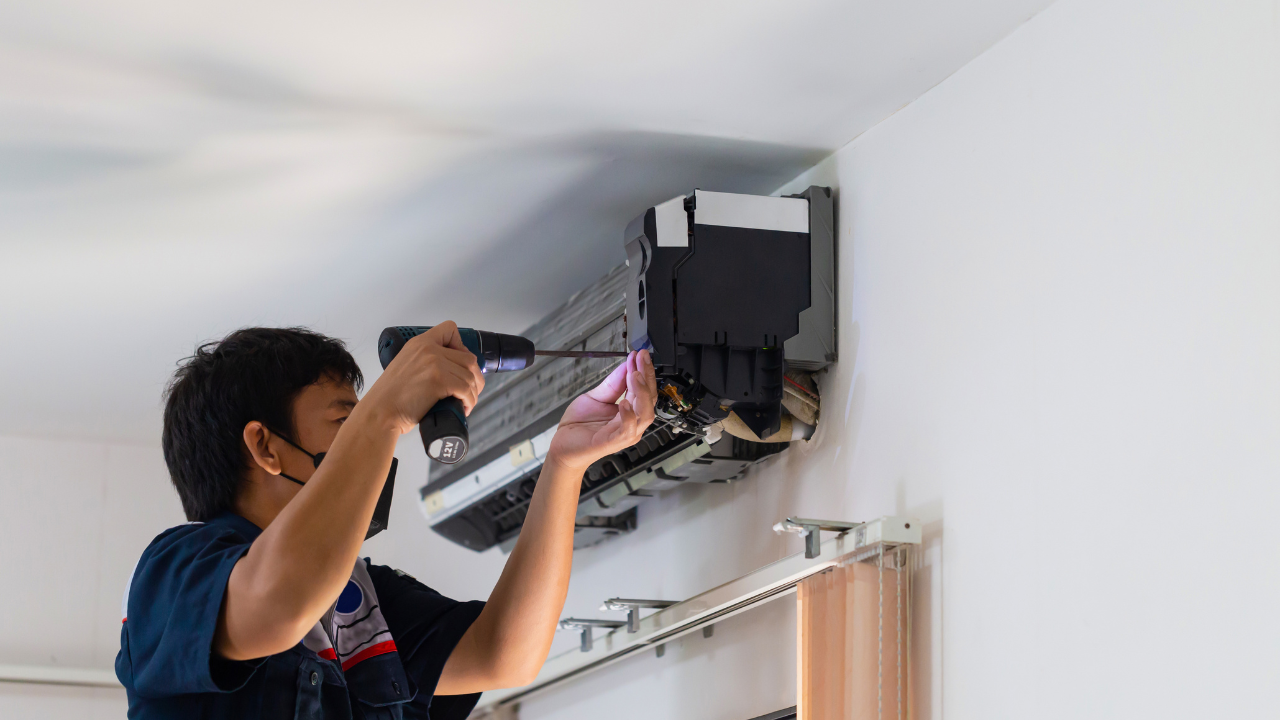
Frozen Evaporator Coil: Causes and Rectification A frequently encountered problem is the freezing of the evaporator coil. This issue arises when the unit is deprived of the requisite airflow, primarily due to accumulated debris.
Dynamics: The amassed dirt on the coils hinders airflow, preventing warm air from interacting with the refrigerant. As a result, the refrigerant’s temperature drops excessively, causing the moisture on the coils to freeze. Over time, the ice casing obstructs the refrigerant from assimilating latent heat, thereby affecting your air conditioner’s performance.
Solution: To address this, one should inspect the coil, followed by a defrosting process. Ensure the unit’s power is disconnected, and allow approximately 24 hours for complete thawing. The use of a hairdryer can expedite the process, but caution is needed to avoid overheating. In milder frost cases, activating the fan mode can aid in melting the frost without halting the unit.
Capacitor Issues and Their Impact If your air conditioner exhibits irregular on-off cycles or emits clicking sounds, it might indicate a capacitor problem. The capacitor is vital for initiating the motor of the air conditioner.
Underlying Issues: Factors like strenuous operations during peak summer, power inconsistencies, or frequent thermostat adjustments can deteriorate the capacitor.
Solution: Given the risk of electric shock, it’s imperative to consult a professional for capacitor assessments and replacements.
Thermostat Concerns and Effective Solutions A malfunctioning thermostat is a common issue in home air conditioning systems. Manifestations include short cycling of the AC or an unusually warm ambiance.
Potential Causes: Dust accumulation, corrosion, battery depletion, or loose internal components can hinder the thermostat’s functionality. Furthermore, direct exposure to sunlight or incorrect calibrations can skew its readings.
Solution: For battery-operated thermostats, ensure the batteries are functional. Gently clean any visible dirt using a soft brush. For corrosion issues, seek professional help to prevent exacerbating the damage. Ensure your thermostat is positioned in a frequently occupied room and away from direct sunlight. To validate its calibration, compare its reading with a glass thermometer after 15 minutes; a discrepancy exceeding one degree calls for recalibration.
For a more holistic solution, consider transitioning to a smart thermostat. This not only provides tailored settings and remote control via smartphones but also contributes to energy conservation and reduced utility bills.
Decoding Unusual AC Noises and Their Solutions
Understanding the Sound: Unusual noises emanating from your air conditioner often signify a potential issue. It’s crucial not to disregard these sounds, as doing so might exacerbate the problem. Different noises may provide clues about distinct problems. For instance:
- A grinding noise suggests potential compressor or motor failure.
- Clicking noises may arise due to obstructions in the AC fan or capacitor issues.
- Bubbling sounds often result from refrigerant leaks or excessive moisture in the unit.
Recommendation: Should you notice any of these noises, it’s imperative to contact an HVAC specialist promptly. The expert will decipher the cause behind the noise and address the root issue.
Issues with Circuit Breakers and Their Implications
Problem Diagnosis: Repeated tripping of your circuit breaker can be attributed to various factors, such as power surges, capacitor malfunction, clogged filters or coils, refrigerant insufficiency, compressor issues, or even problems with the breaker itself. If you encounter this, ensure the AC is switched off and refrain from resetting the breaker to avoid fire hazards.
Recommendation: Given the electrical nature of circuit breakers and the risks associated, DIY solutions are not advisable. Seeking professional assistance promptly can not only resolve the issue but also enhance the longevity of your AC unit.
Identifying AC Odors and Effective Remediation
Decoding the Smell: Much like unusual noises, distinctive odors from your AC can shed light on underlying problems. For example:
- A strong, pungent odor often points to mold proliferation.
- A smell reminiscent of burning suggests issues with the AC’s electrical components.
- The scent of gas might hint at a Methyl Mercaptan leak, posing significant risks.
- If you’re using the AC after a prolonged hiatus and detect a rotten egg odor, it might be caused by deceased creatures, like birds or insects, within the system.
Recommendation: Post-winter reactivation of your AC might lead to unusual smells, which should dissipate shortly. However, if the odor persists, it suggests a deeper problem. It’s crucial to conduct a thorough cleaning of your AC unit after a period of dormancy. For concerns related to electrical malfunctions or gas leaks, promptly enlist the services of a professional to ensure safety and optimal functionality.
Conclusion
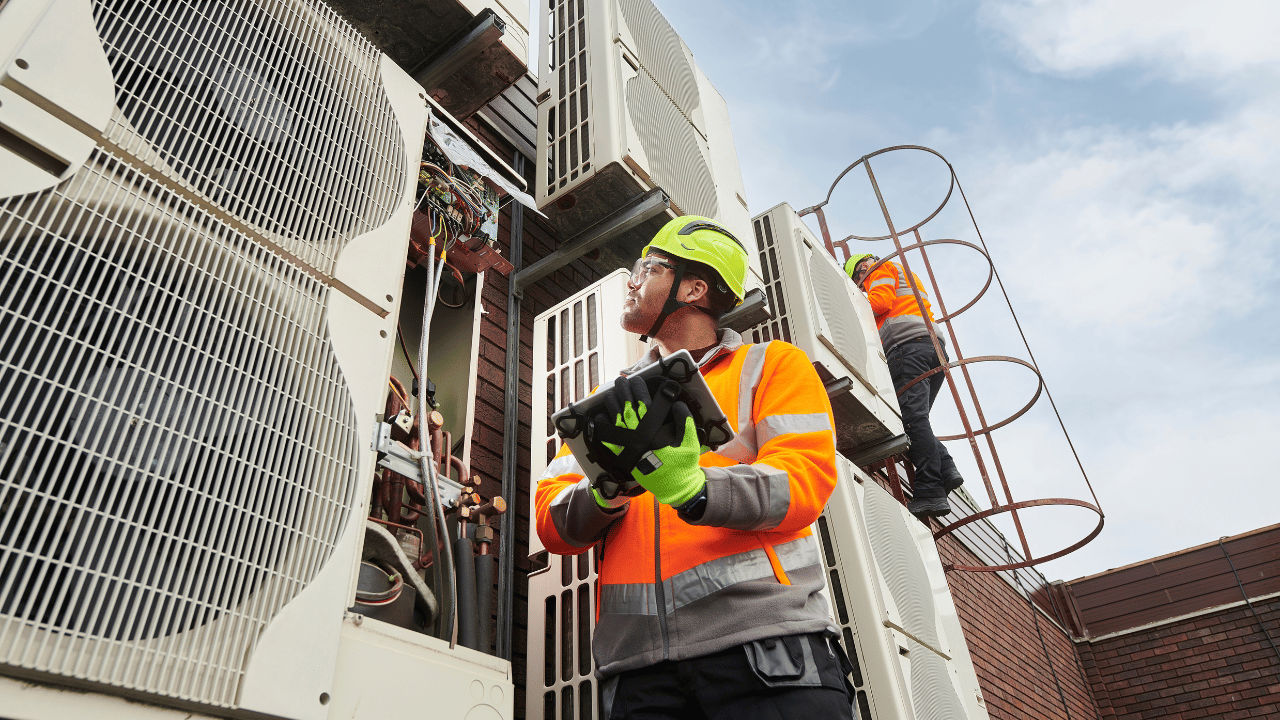
Maintaining a functional air conditioner is essential to beat the heat and enjoy a comfortable indoor environment. By familiarizing yourself with the common problems that can arise and learning how to address them with DIY fixes, you’ll not only save money on repair costs but also ensure that your AC continues to work efficiently. Remember that regular maintenance and addressing issues promptly can extend the lifespan of your air conditioner and prevent more significant problems from developing. While these DIY fixes can be helpful, it’s important to recognize when a problem might require professional intervention. If you ever feel unsure about tackling a repair or the issue persists despite your efforts, don’t hesitate to seek assistance from HVAC experts. With a little knowledge and proactive care, you can keep your air conditioner running smoothly and enjoy a cool and comfortable living space all summer long.
